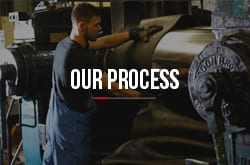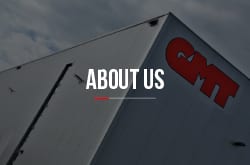There are numerous reasons why controlling vibrations in construction work is important, including the need to keep the construction plans continuing without complaint from the public.
Category:
The Importance of Controlling Vibrations in Construction
May 20th, 2023 by Steve MelvilleMachine Vibration Causes and Fixes
April 6th, 2023 by Steve MelvilleWhat Is Machine Vibration?
Most machinery experiences a level of vibration, and will have an expected ‘normal’ range of machine vibration while functioning. However, over time, or if something breaks or goes wrong, this level of vibration may be elevated beyond what is expected, and this can easily become dangerous to operators and the machine itself.
How to Reduce Noise and Vibrations from Wind Farms
February 16th, 2023 by Steve MelvilleIn the modern age, with our ever-increasing environmental awareness, it’s no wonder that different types of renewable energy and power generation are thriving. In the UK, one of the most popular forms of renewable energy is wind farms, both on- and off-shore, but the vibrations and noise from wind farms can be prohibitive in their building.
Ground Source or Air Source Heat Pumps – Which Is Better?
December 8th, 2022 by Steve MelvilleAir source heat pumps vs ground source heat pumps; the debate continues between these two similar but distinct technologies. Between May and July 2022, almost 903 ground and air source heat pumps were used to displace other types of home heating fuel including gas, oil and coal.
Step by Step Guide to Choosing Anti-Vibration Mounts
April 8th, 2021 by Steve MelvilleAs a leading specialist in rubber vibration mounts, we offer our extensive expertise using a step by step guide to help you choose the correct rubber mounts. Read on to read our easy to follow guide to choosing the best anti-vibration mount to suit you.
How to Meet Industry Standard Isolation Levels by Choosing the Correct Vibration Control Products
January 22nd, 2020 by Steve MelvilleGMT mounts are used to isolate against two main types of mechanical movement; vibration and shock. Put simply; vibration is described as a repeated movement, whereas shock is a one-off disturbance.
Levelling Feet: A Comprehensive Guide
September 5th, 2017 by Steve MelvilleLevelling feet can stabilise a wide range of machinery, with the height adjustment feature of allowing machinery to be levelled when installed on uneven ground.
There are a variety of combinations and sizes available, meaning that there is a type to suit all applications. At GMT, spindles can be combined with various types of threaded foot plate, enabling customers to specify feet to their exact requirements. The feet can also be specified to have anti-slip rubber pads. Additionally, feet with high load bearing capacity and self-aligning capabilities are available.





